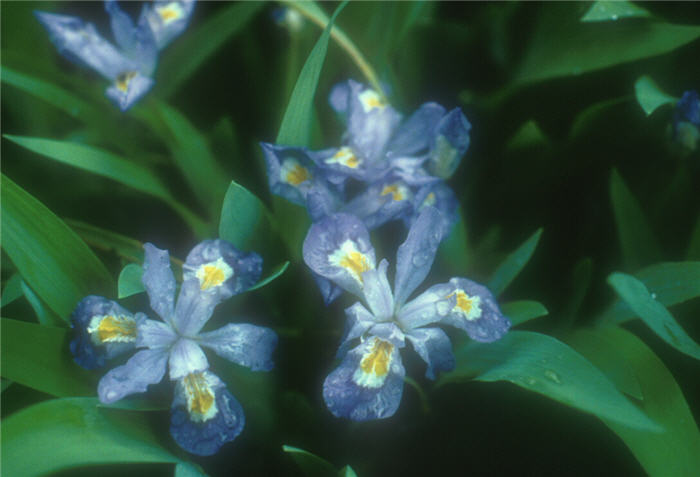| Botanical Name: Iris cristata | |
| Common Name: Dwarf Crested Iris |

-
Anatomy
-
Culture
-
Design
Plant Type
Ground cover, Perennial, Bulb
Height Range
Under 1'
Flower Color
Blue, Lavender
Flower Season
Spring
Leaf Color
Green, Yellow Green
Bark Color
n/a
Fruit Color
n/a
Fruit Season
n/a
Sun
Full, Half
Water
Medium, Extra in Summer
Growth Rate
Moderate
Soil Type
Sandy, Clay, Loam
Soil Condition
Average, Rich, Well-drained
Soil pH
Neutral
Adverse Factors
Invasive
Design Styles
English Cottage, Formal, Japanese, Woodland
Accenting Features
Showy Flowers
Seasonal Interest
Spring
Location Uses
Background, Entry, Perennial Border, Shrub Border, Foundation, Parking Strip, Patio
Special Uses
Mass Planting, Naturalizing, Small Spaces
Attracts Wildlife
n/a
Information by: Stephanie Duer
Photographer:
Photographer:
-
Description
-
Notes
Dwarf crested iris is lovely little iris that is low growing (3 to 6 inches) but can spread rapidly via a network of branching rhizomes, to form a dense groundcover. Pale blue to violet flowers with yellow crests on the falls appear mid spring. Leaves are narrow and sword-like, and are green to greeninsh yellow. Well suited to part-shade shrub borders, in woodland gardens, or rock gardens.
Grow in well drained soil in full sun to part to light shade, though best growth occurs in part shade. Prefers sandy-loam soils; but will grow in clay-loam soils as long as it is well drained. Drought tolerant in part shade. Deer resistant.